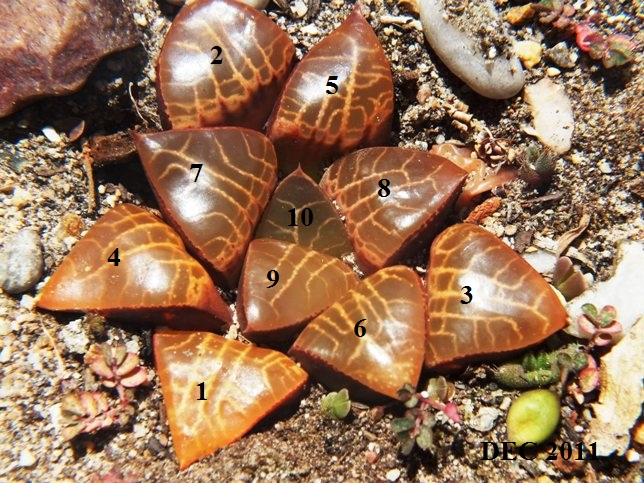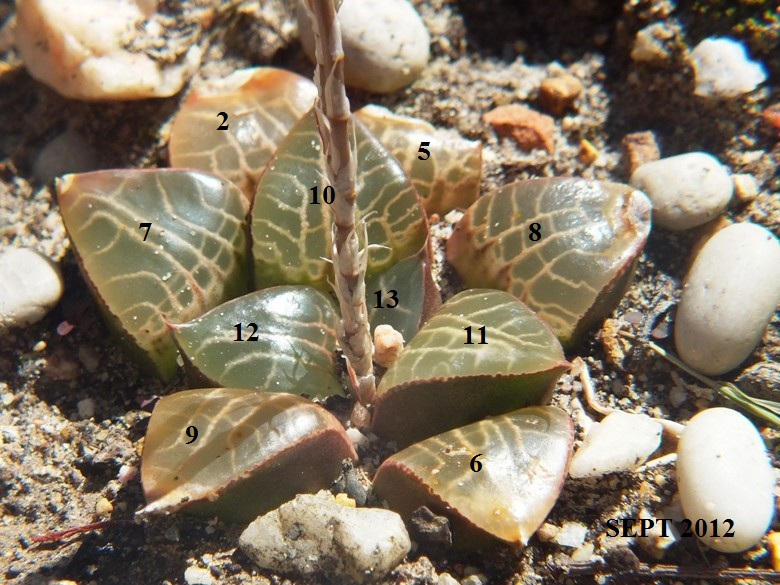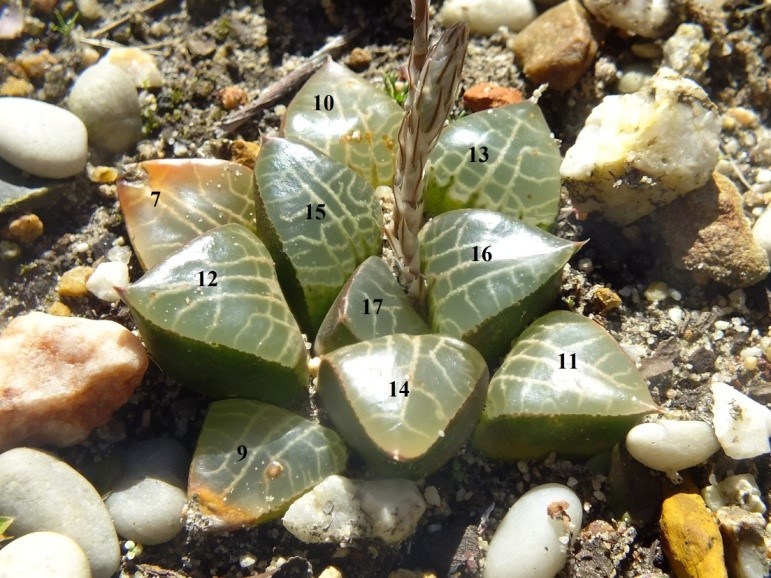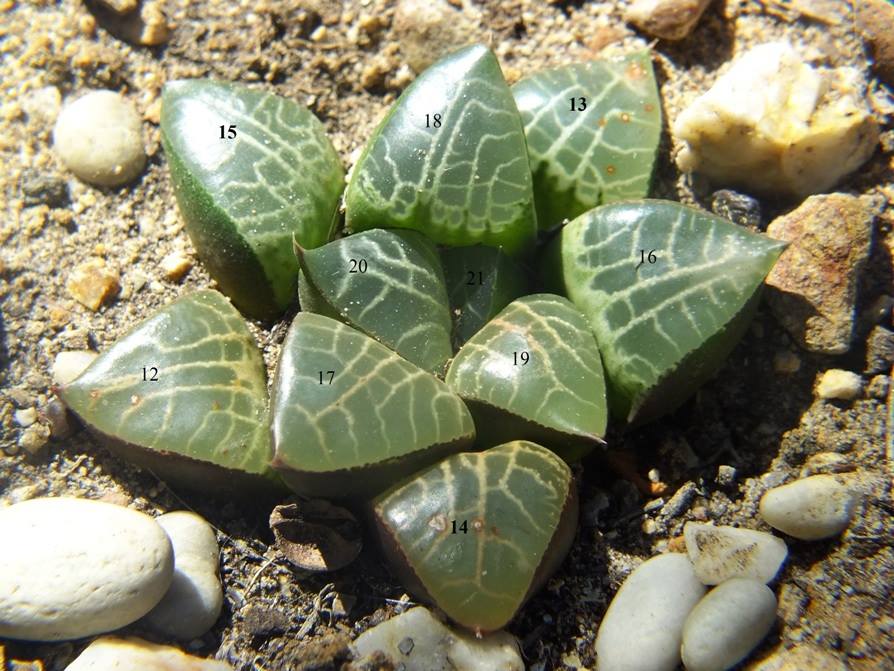





Here is an interesting series of pictures showing Haworthia leaf replacement over only 16 months. The plant is in an outdoor rockery. Leaves are numbered from oldest to youngest. Leaf loss has not been quite sequential as the 7th leaf outlived the 5th. In the growth condition of September 2012 the leaves show three tiers viz. 1,4,7,10,13 / 2,5,8,11 / 3,6,9,12. The figure for Dec 12 illustrates the “5-tiered” artifact of the spiral sequence with leaves 15/10, 14/9, 13/8, 12/7 and 16/11/6 in each tier.
These pictures demonstrate that the plants grow quite fast. They may not be very long-lived in nature. I estimate a life span of 15-20 years?
The first picture of this plant was taken in Dec 2011 when the leaves were numbered 1 to 10. Here in March 2014 leaves 1 through 12 have died away and there are 10 new leaves. At the same time the stem will be stretching as roots are replaced in a similar sequence. The life of the plant is going to be determined by the way in which the old stem and roots decay and how that decay will affect the ultimate health of the whole plant.

In the field it seems as though the decay of the old leaves and stem is well regulated as a sort of dry composting. In cultivation this can vary from this state to when all the roots and even the base of the stem can rot unhealthily. In the field one does finds moribund old plants that are at the end of their life and with large aged stems. Just how long the plant can maintain good health in either the field or in cultivation is an unknown. A grower just has to depend on experience and feel for his/her plants and this is why some time back I guessed at the normal life of one of these ‘retuse’ haworthia at about 10-15 years. Some things like Tulista pumila and Haworthia coarctata are quite different as the stems can elongate and re-root along the ground. Plant of H. coarctata more than 3 meters in diameter must be very old. Even H. reticulata or H. herbacea do this – look at H. cymbifomis ‘ramosa’. What you can consider is that new leaves and flowers follow a regular process and it is useful to remember that the plants go through a non-growing stage in the year. I tend to think most haworthia grow in the spring and autumn disliking the heat of summer and the cold of winter. But this is just a generalization that points to things that need to be considered. All species are not the same. Good root health is also associated with drainage and adequate air space in the growing medium.
In species like coarctata and reinwardtii – and I doubt that these are two different species – the plants easily lose obvious connection to the mother clone and a single clone can come to occupy a very large area. H. cymbiformis and H. angiustifolia can also spread widely by pieces breaking off to establish somewhere else. H. limifolia does it by stoloniferous expansion as can H. marumiana and H. zantnertiana. But coming back to the solitary non-pupping growth forms it would be interesting to know just where the essential life of the plant resides. Sometimes the stem just seems to get too thick and cutting it back too far also cuts away the support and source of the very young and new centre leaves.
Addendum: 10 March 2023
New leaf formation is an annual event as is new root and stem growth. So the life of the plant is a delicate balance between decay of old and re-placement by new. There are always moribund old plants and there are sometimes seedlings. Seed is not widely and randomly dispersed. They occur less frequently as distance from the parent plant increases. Also, germination and survival in any year is a gamble. Anyone with field familiarity will have observed that no two years are the same. Some events are once-in-forever events. Like the field of red Droasanthemum speciosum one year east of Worcester, or the mass display of pink Drosanthemum micans that is normally yellow there (this yellow variant has the name D. halli). The fields one year of yellow – Moraea gawleri. Another year, rings of pinkish red Ruschia carolii around the termitaria. One year flowering Stapelia thudichumii everywhere in the Tanqua Karoo. And so on. ♦
